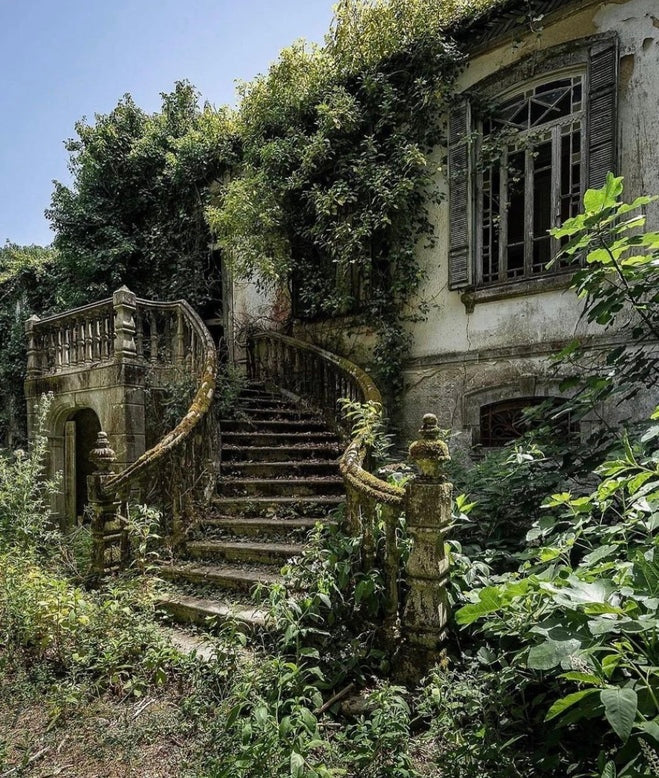Explore the Top 10 must-visit urbex sites in Canada: discover abandoned locations filled with mystery and history, perfect for urban explorers
Urban exploration, or Urbex, involves exploring man-made structures, often abandoned or hidden from the general public. Canada, with its rich history and vast landscapes, offers a plethora of sites that intrigue and captivate the imagination. From abandoned villages to historic industrial complexes, these locations provide a glimpse into the past. It's important to note that while exploring these sites, one should always prioritize safety and legality. Always obtain proper permissions and respect local laws and property rights.
1. Val-Jalbert Ghost Town (Quebec)
Located near the Lac Saint-Jean, Val-Jalbert is a well-preserved ghost town that was abandoned in the 1920s. Originally a pulp mill company town, it now serves as a historical park. Visitors can legally explore restored buildings, including homes, a school, and the old mill, while learning about early 20th-century life in Quebec.
2. Riverview Hospital (Coquitlam, British Columbia)
Opened in 1913, Riverview Hospital was once a large mental health facility. Although much of the site is off-limits due to safety concerns, parts of it have been used for film productions and guided tours are occasionally offered. The site's architecture and history make it a fascinating destination for those interested in Urbex.
3. Britannia Mine (Britannia Beach, British Columbia)
Once the largest copper mine in the British Empire, the Britannia Mine operated from 1904 to 1974. Now transformed into the Britannia Mine Museum, visitors can legally explore underground tunnels, historic buildings, and interactive exhibits that showcase Canada's mining heritage.
4. Kingston Penitentiary (Kingston, Ontario)
The Kingston Penitentiary, operational from 1835 to 2013, is one of Canada's oldest prisons. Now a National Historic Site, it offers guided tours that provide insight into the country's correctional history. The imposing architecture and storied past make it a compelling Urbex destination.
5. Cobalt Mining District (Cobalt, Ontario)
Designated a National Historic Site, the Cobalt Mining District was central to Canada's silver rush in the early 1900s. Visitors can explore remnants of old mines, headframes, and buildings. There are museums and guided tours available to learn about the area's significant mining history.
6. The SS Ethie Shipwreck (Gros Morne National Park, Newfoundland and Labrador)
The SS Ethie was a coastal steamer that ran aground in 1919. The remains of the shipwreck are accessible along the coast within Gros Morne National Park. While respecting park regulations and safety guidelines, visitors can view the scattered artifacts and learn about the maritime history of the region.
7. The Ghost Town of Bankhead (Banff National Park, Alberta)
Once a thriving coal mining town, Bankhead was abandoned in the 1920s. Located within Banff National Park, the site features foundations of buildings, mining equipment, and interpretive signs. Visitors can legally walk through the area and imagine life in this early 20th-century community.
8. Tranquille Sanatorium (Kamloops, British Columbia)
Established in 1907 as a tuberculosis treatment center, Tranquille Sanatorium later served as a mental health facility before closing in the 1980s. The site offers guided tours that include underground tunnels and historic buildings. These tours provide a safe and legal way to explore the site's rich history.
9. Abandoned Grain Elevators (Various Locations, Saskatchewan and Alberta)
The prairies of Saskatchewan and Alberta are dotted with abandoned grain elevators, symbols of Canada's agricultural heritage. While many are on private property, some communities have preserved them as museums. Always seek permission before approaching these structures.
10. Cape Breton Coal Towns (Nova Scotia)
The remnants of coal mining towns like Broughton offer a glimpse into Nova Scotia's industrial past. Foundations of buildings and mining infrastructure can still be found. Visitors should respect property rights and safety warnings when exploring these areas.
Discover the best places in Urbex with our maps !
Are you looking for the best urbex locations near you? Look no further! Whether you're a seasoned urban explorer or a curious hobbyist, our maps are full of abandoned places to explore. Discover our Maps !












